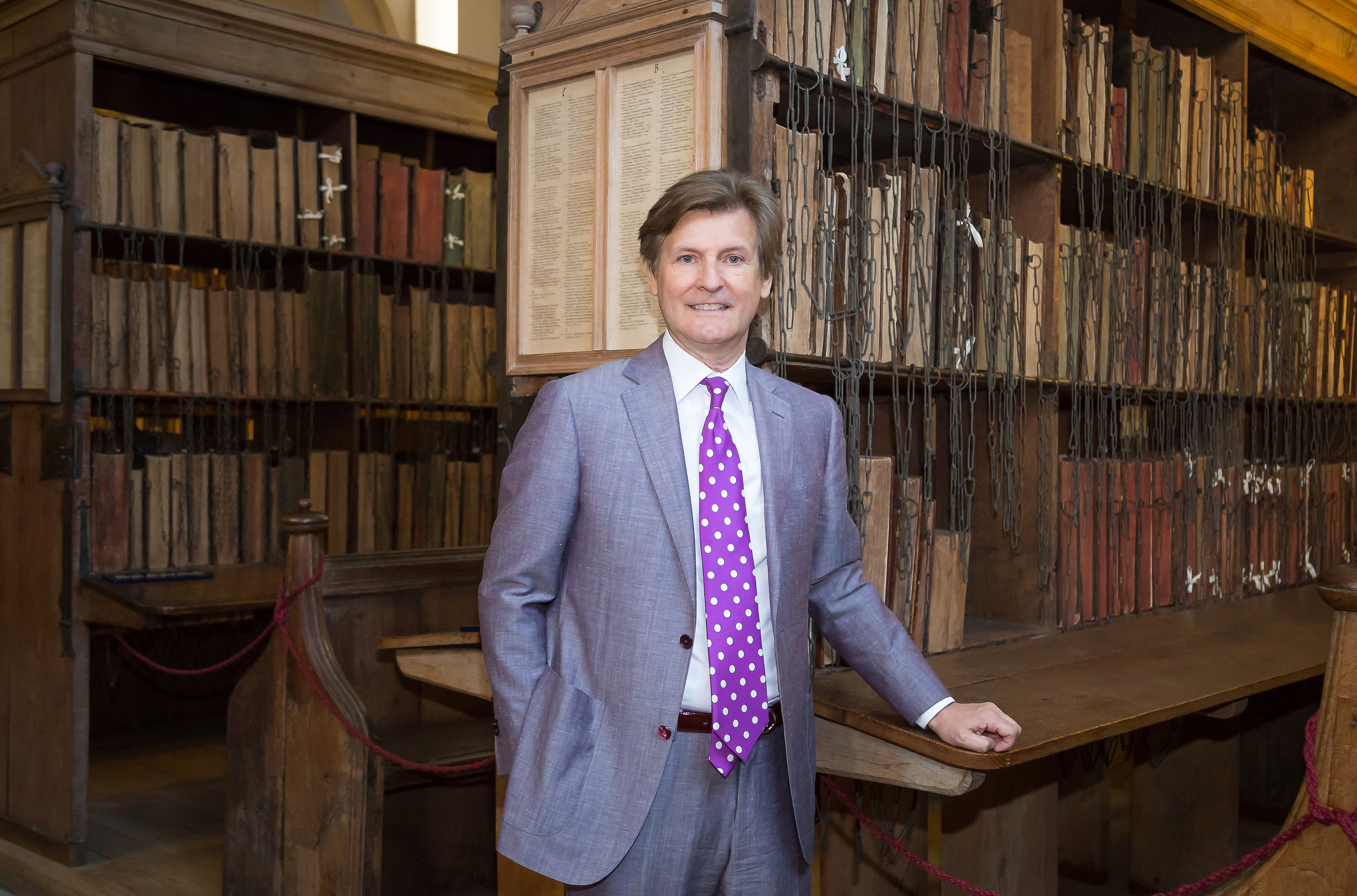If you ask Prof Janusz Kozinski to name the people who have most impressed him since he moved to the UK, he has no hesitation: “When I've given talks at schools I've been immensely encouraged by the young people who want to talk to me afterwards about what I’ve been saying. On each occasion I’ve had perhaps 50-100 people wanting to know more.”

Carrying a new message into schools is at the heart of the project the Polish-Canadian academic is leading to develop new ways of teaching engineering. One of its key objectives is a big increase in the number of women who choose to study the discipline.
Since the summer of 2017 Kozinski has been chief executive of New Model in Technology and Engineering – a new university based in the country town of Hereford. A more memorable name for the establishment – possibly Hereford Engineering University – will be announced soon.
Kozinski’s ambition is to create a new breed of “humanist engineer” – people with technical skills but whose knowledge and mindset also embrace other ideas. “I want to make a link between the technological aspects to engineering and other disciplines – law, the humanities, arts and social sciences. I want to relate engineering to the meaning of citizenship. People on our courses will spend at least one term outside the UK so they learn about other cultures.”
The professor’s ideas represent a radical contribution to the debate about how to make manufacturing and engineering more meaningful and attractive especially to young people. Made Here Now was established with this aim in mind.
The 58-year-old says his ideas appeal both to employers – who say they desperately need people with technical as well as social skills – and to young people and schools. “We've had many discussions with schools in Britain, mainly in the public [government-funded] system. Many of them say they like the idea of getting involved with something new and different.”
Much of Kosinski’s philosophy stems from his experience starting up and running the Lassonde School of Engineering in Toronto, part of York University. Over the four years he was there, Kozinski attracted $250m of funding, and doubled the proportion of women in the intake to 34 per cent. At the start of the 2017/18 year, just after he left, the school admitted 800 students, up from 480 at the start.
He sees many similarities between the young people he’s met in Britain and North America. “[In both regions] they are bright and interested in challenges. They are interested in many things outside the academic world – in the environment, politics and economics.”
But he notices a big difference in the way people think about engineering. “In the UK perceptions are quite negative. Mention of engineering [in newspapers] tends to be accompanied by a photo of two males in hard hats and working in sectors such as construction or the railways. In Canada the image is completely different. Engineering is regarded as a top profession equivalent to that of a medical doctor. Engineering is considered as something related to the work done by companies such as Google, Twitter and Apple. In North America such connections follow [in people’s minds] quite naturally, while in Britain engineering requires more explanation.”
NMITE will try out its teaching methods from September 2018 with a small number of students, followed by a much bigger group when the university launches in earnest two years later. Based in one of the most rural regions of England, Hereford is better known for agricultural shows than cutting-edge technology. Kozinski has however been encouraged by what has been achieved so far, particularly the strength of local support. He reckons he is well on the way to achieving his goal of raising £80m for the new institute over the next few years to give it a decent chance of success.
Almost £25m has been promised from government sources – either central or local - and just over £1m has been raised through a local club of 100 individual supporters – all of whom have contributed between £5,000 and £100,000. Another £1m has come from a donation of Quanser, a Canadian maker of test equipment.
The Garfield Weston Foundation, a charity, has sanctioned £500,000 which will help finance an eye-catching NMITE initiative – portable “ingenuity labs” crammed with scientific and engineering hardware such as 3D printers that will be placed in schools for a week at a time to help teachers get across the practical elements of engineering to their pupils. Three of these units should be ready to be taken by truck to the first schools from September, and Kozinski says he already has a list of 12 schools keen to host them over the following eight months.
He says several big engineering companies have expressed interest in getting heavily involved with the new institute – and donating sizeable sums. “I’m speaking to one big company who’s discussing giving us as much money as the government has already said it will contribute,” says Kozinski.
Given his interest in overseas connections, does he worry about the UK’s decision to leave the European Union?
“From an academic perspective, I don’t see too many risks from Brexit. Our institution will be focused on educating students, not research, so we are not in the market for EU [research and development]. We want to create close ties with other academic establishments outside Britain including in the rest of Europe and I can’t see that the EU decision will prevent us.”
Encouraging women a key challenge
An overriding goal of Prof Janusz Kozinski, chief executive of Britain’s new NMITE engineering university, is to attract more women to his institution’s three-year undergraduate courses and combat what many regard as a damaging gender barrier in engineering.
Fewer than one in five students staring engineering courses in Britain is a woman, a much lower proportion than for almost every other subject. This mismatch both limits women’s career options and seriously hinders efforts to address widespread skills shortages.
“The way engineering is taught in the UK is very traditional,” Kozinski says. “I think if we change the way we teach engineering we can uncork some of the problems [dissuading women from working in technology and related fields].”
At the heart of his approach is the idea of injecting much practical work into NMITE’s courses. The university will also add a dimension that introduces what Kozinski calls “social and community values”. Both these directions will, he says, help to ensure the institution meets its ultimate target of ensuring that half its entrants are female.
The courses will include a focus on problem solving and constant contact with industry. The social element will be achieved, says Kozinski, through periods built into the teaching timetable in which students get the chance to home in on everyday problems.
“For example, I like the idea of engineering students taking time to work with homeless people. They could create a new sort of app for smart phones which provides better ways for people who are homeless and hungry to find sources of food, maybe from businesses that are providing donations.”

NMITE has recruited as its new provost a notable champion of women in engineering in the shape of Prof Elena Rodriguez-Falcon, a Mexican-born academic who was head of enterprise and engineering education at the University of Sheffield where she was also in charge of a project to boost the number of women entering the engineering field.
